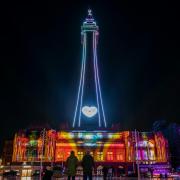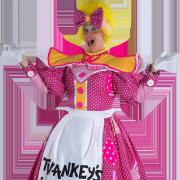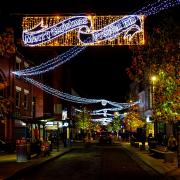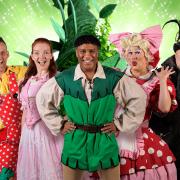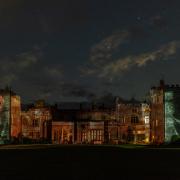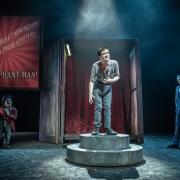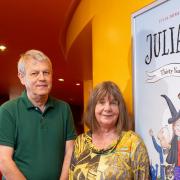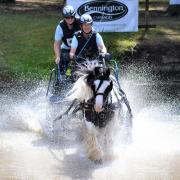As the nation remembers the sacrificies made in World War One, Preston recalls a battle that took place 300 years earlier. Mairead Mahon reports

Three hundred years ago, in November 1715, the streets of Preston were alive to a bloody and brutal battle that raged through its centre. The battlecries of the Jacobites and the government forces echoed through the town, as did the crackle of the fires which destroyed buildings belonging to ordinary Prestonians.
The Jacobities wanted to place James III on the throne while the government forces wanted to keep George I comfortably on it. The Battle of Preston – which ended in bitter defeat for the Jacobites – has been called the last ever battle to take place on English soil and it was a battle that could have changed the face of British history for ever.
And Preston is determined to mark the anniversary. With the help of a grant of almost £50,000 from the Heritage Lottery Fund, it is ready to put the Battle of Preston firmly on the map. It’s been a real group effort, as thirty organisations have been involved in the two year planning from local history and community group to the city’s cultural services and university.
‘Funnily enough, the battle of Preston seems to have slipped under the radar of many Lancashire people and sometimes people connect it to the Civil War but it is quite different,’ said Sue Latimer of Preston’s Harris Museum and Art Gallery.

‘What we want to do now is to make everyone aware of it. It didn’t end particularly well for Preston but it is an incredibly important part of Lancashire’s history and after three hundred years, the time has come to re-visit it. There will be re-enactments, displays, songs, lectures and even ale and cakes.’
The battle began when the Jacobites entered the market square on November 10th and declared James III to be king and celebrated by drinking with some local people.
‘We’re going to re-enact this event on the actual day on the Flag Market and, as ale featured in it, we thought it might be fun to have a special unfiltered ale brewed and a local brewery, Harts, has come up with a commemorative beer called 1715. Of course, beer doesn’t suit everybody and we’re hoping to have King James gingerbread made to an original recipe. It doesn’t have any eggs or raising agent in it, which sounds a bit odd but I have tasted it – in the line of duty – and it is delicious, especially if you like treacle,’ said Sue.
For those who might like to walk it off the effects of cake and ale there is also a battle trail.

‘It’s true that the city may have changed greatly over three hundred years but, as the streetscape remains similar, people will be able to follow in the footsteps of the battle, either by using a specially devised app or by taking part in a guided tour. Today, the area around Church Street, Friargate and Fishergate is more used to shoppers carrying bags than men carrying pikes but this is where the fiercest fighting took place.
‘To give you an idea of just how fierce, it took ‘some days’ to bury the dead of both sides. 1500 Jacobite prisoners were held in the parish church, where the Minister stands today and Gallows Lane was where several of them were hanged: one having the added indignity of having his head fixed to a pole at the town hall. If you look carefully you can see that some of our streets are named after people who took part in the battle, such as the leader of the Jacobites: the Earl of Derwentwater,’ Sue added.
Documents from the Lancashire Archives will show what it was like for the ordinary people of Preston. Many of them, naturally enough, weren’t very happy at having to provide carts and food for the government forces and wrote in optimistically asking for compensation. Others had property destroyed by fire: one Joseph Tomlinson was particularly put out; as he suffered the extra inconvenience of having his malt kiln burnt down by soldiers and his letter shows that he was determined to be recompensed.
Later in the month, historians will be giving a series of lectures on all aspects of the battle but the central event of the commemorations will take place over the weekend of November 14th and 15th. The venue will be the Minster and the first day will be a day of living history.
A re-enactment took place in the summer at Hoghton Tower and many of those who took part will be in the Minster in full costume to answer questions. There will also be weaponry and maps from the time on show, as well as a traditional printing press which will reproduce documents of the period.
War game tables will also be available but for those who prefer something a little less martial, local singers will perform Jacobite songs.
‘I think some people will recognise some of the tunes even if they don’t know all the words. Having said that, I’ve been surprised at the amount of people who do know the words to ‘Lo! The Bird is Fallen’ although as it’s become a traditional Lancashire ballad maybe it’s not so surprising after all,’ said Sue.
The following day will see an event entitled ‘Light on the Battle’ take place. This will be a performance event centring around the Minster and as dusk falls, lights will be placed all around the area in order to mark the fact that at the close of battle, Prestonians put lit candles in their windows.
‘We are expecting it to be quite an emotional ending and one that will probably bring a tear or two to the eye, no matter what side spectators might root for,’ said Sue
The commemoration is already attracting attention from all around the world: one American gentleman whose ancestors hailed from Lancashire has even sent some documents relating to the battle, so they can be displayed. Thanks to social media though, there is no need for anyone to miss out, whether they’re in Penwortham or Pennsylvania.
‘We have had so much interest from all corners of the globe that we opened a Twitter account, where we will give exciting ‘real time’ updates of everything just as it happened 300 years ago: the account already has over 50,000 followers,’ Sue said.
Might that technology have changed the outcome if it had been available in 1715? Who knows, but one thing that is known without a doubt is that the Battle of Preston will never be overlooked again. w
To explore further, go online to prestonguildcity.co.uk and you could also visit other Lancashire places with Jacobite connections.
Browsholme Hall, near Clitheroe
Harris Museum and Art Gallery, Preston
Kings Own Royal Regiment Museum, Lancaster
Lancaster Castle
Samlesbury Hall, Samlesbury
Stonyhurst College, near Clitheroe
Townley Hall, Burnley








